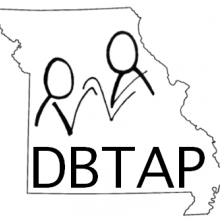Self-Assessment Guide Stories: Missouri's Experience
Jennie Maschek, Missouri Deafblind Technical Assistance Project
January 2018
Our project staff were concerned about the lack of outcomes achieved from our identification and referral outreach efforts, including to Part C, and had discussed the issue with our advisory committee. During that time, the opportunity to participate in a pilot test of the Self-Assessment Guide became available and we felt it would be useful to go through this systematic process in addition to obtaining input from our advisory committee
We found it user-friendly. Our state data was automatically populated, so it was ready to go. We were able to complete the assessment in 2 to 3 weeks. All project staff were involved. Each of us did bits and pieces on our own and then we put the information together.
Our conclusion after going through the guide was that we should target Part C and we were thrilled that this matched our advisory committee’s advice. It was a validating process in that regard. By helping us think about the feasibility and likelihood of affecting change for different systems, the guide helped us narrow our focus. We realized that we would be most effective in focusing on Part C. Knowing we did not need to reach out to multiple systems at one time helped us to feel less overwhelmed.

Action Planning
Once we completed the assessment, we developed an action plan. We used all the practices in the toolkit, but focused especially on resources for improving outreach to primary referral sources. Our action plan included the following steps intended to re-establish connections with Part C:
- Narrow and refine our message
- Standardize materials and procedures within the Missouri School for the Blind, where our project is housed
- Give presentations to Part C directors
- Provide feedback about the results of referrals to Part C providers
Narrowing and Refining Our Message
In going through the guide and reviewing the toolkit resources, we realized we had really missed the mark in our work with referring programs and agencies, especially Part C. We were so focused on eligibility and the referral process, that we neglected to let partners know why they should refer children to us—what the benefits were for families and children, as well as for Part C staff. We had also neglected to provide feedback to referring agencies about something else that is important to them, what happens with the children and families they refer.
Revising Our Materials
We began this process by reviewing our deafblind project’s materials and those of other outreach programs within the Missouri School for the Blind, including the APH Instructional Resource Center, family training projects, and other services. We brought the leads for the various services together to standardize our language. For example, everyone agreed to include language for combined vision and hearing loss, not just vision loss in all eligibility criteria and materials.
We then submitted our project’s materials to the state Part C Coordinator and received feedback on how to make our wording consistent with theirs. She encouraged us to revise our release-of-information forms to make them more consistent with Part C’s. As a result, our processes became less intimidating for their service coordinators. Anything we could do to make our materials easier for them to use, we were eager to do.
Presenting to Part C Directors
When we reached out to the Part C Coordinator, she also invited us to speak to regional Part C directors. This was fortuitous because we had been trying to identify the best ways to connect to them via Missouri’s Part C points of entry. This began three to four years ago and they have invited us back every year. We are now a standing item on their November meeting, so every year, just before we send out our child count materials we speak to the regional directors and walk them through the forms ahead of time. We show them how easy they are to complete and highlight changes from the previous year.
Providing Updates
At the November meeting we show the Part C Directors a map of Missouri with referral locations identified. We tell them about project activities or initiatives that the children they referred—and their families or service providers—were involved in during the previous year. We can tell them, for example, who from Southwest Missouri participated in training events. This gives the directors feedback on how their identification efforts made a difference by increasing awareness, knowledge, or engagement. This has been a powerful way to let the directors see the positive impact of their referrals.
Outcomes
Before implementation of our action plan, there were only 12 children aged birth through two located in Missouri. After a full year of making changes and working with Part C we had 21 children in this age range identified, a 75% increase. After two years, that number increased to 28, an additional 33% increase. In 2016, 7 of the 28 children transitioned from Part C to Part B and three additional infants and toddlers were identified, leaving our current number at 24.
Jennie Mascheck was formerly the project director for the Missouri Deafblind Technical Assistance Project. She retired in 2016. This article is a summary of information she provided during a series of webinars in October and November 2015.
More Self-Assessment Guide experiences